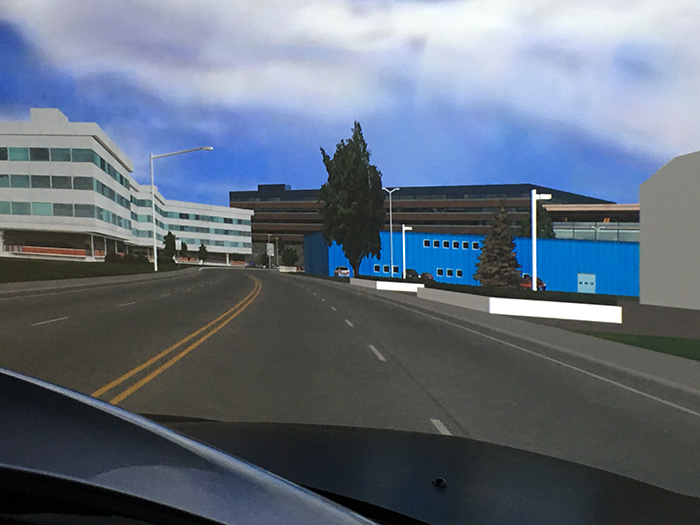New Simulator Studies Roadway Design and Driver Behavior
Posted on Wednesday, November 16th, 2016 by Mike McKennaIn Roadway, tagged in

There are a number of elements that affect driver safety. Some of these, like cell phone usage, have made newspaper headlines, while others, like icy roads and roundabouts, are not as buzzworthy. While you may not often hear about factors beyond distracted driving, there are a variety of components that contribute to safe roads.
Now, the University of Kansas’s (KU) Transportation Engineering Analysis Laboratory (TEAL) has a new way to study those variables. This summer, they received a driving simulator. As a partner in this effort, we were recently invited to give it a test drive. Here is a short video KU created of our visit: http://video214.com/play/3o0ydUBxYNqyDN1nMm2zAA/s/dark.
The simulator is housed in an Acura MDX cab. The display system for it is located outside of the vehicle. It is made up of three, flat projection screens arranged in a semi-circle in front of the cab. Additionally, there is also a fourth screen behind the car that provides a rearview image. Items shown on it are then reflected in the simulator’s side and rearview mirrors.

Using it is similar to playing a video game. TEAL staff and students can modify the software to create different roadway scenarios. These can then be tested to see how a driver would react. When we tried it, we got to drive through a town with joggers, interact with other vehicles, and move through tunnels. One participant even passed a truck on an ice-covered road.
While in use, the room is kept dark, so test drivers can feel immersed in the experience. Right now, TEAL staff is working on adding effects to make the simulator even more realistic. Some of these include creating sensations, like the sound of a car starting, through the introduction of bass speakers.
Ultimately, the university is trying to train students to conduct research. Those using the lab can see how real world problems affect drivers and influence roadway design. As part of our partnership with KU, we have shared sets of CAD files for our 159th Street project. They are in the process of adding them to their system, so students can build scenarios on an actual road. We also hope to use this data to address specific issues or design challenges on projects.
Learn more about our partnership with KU here.